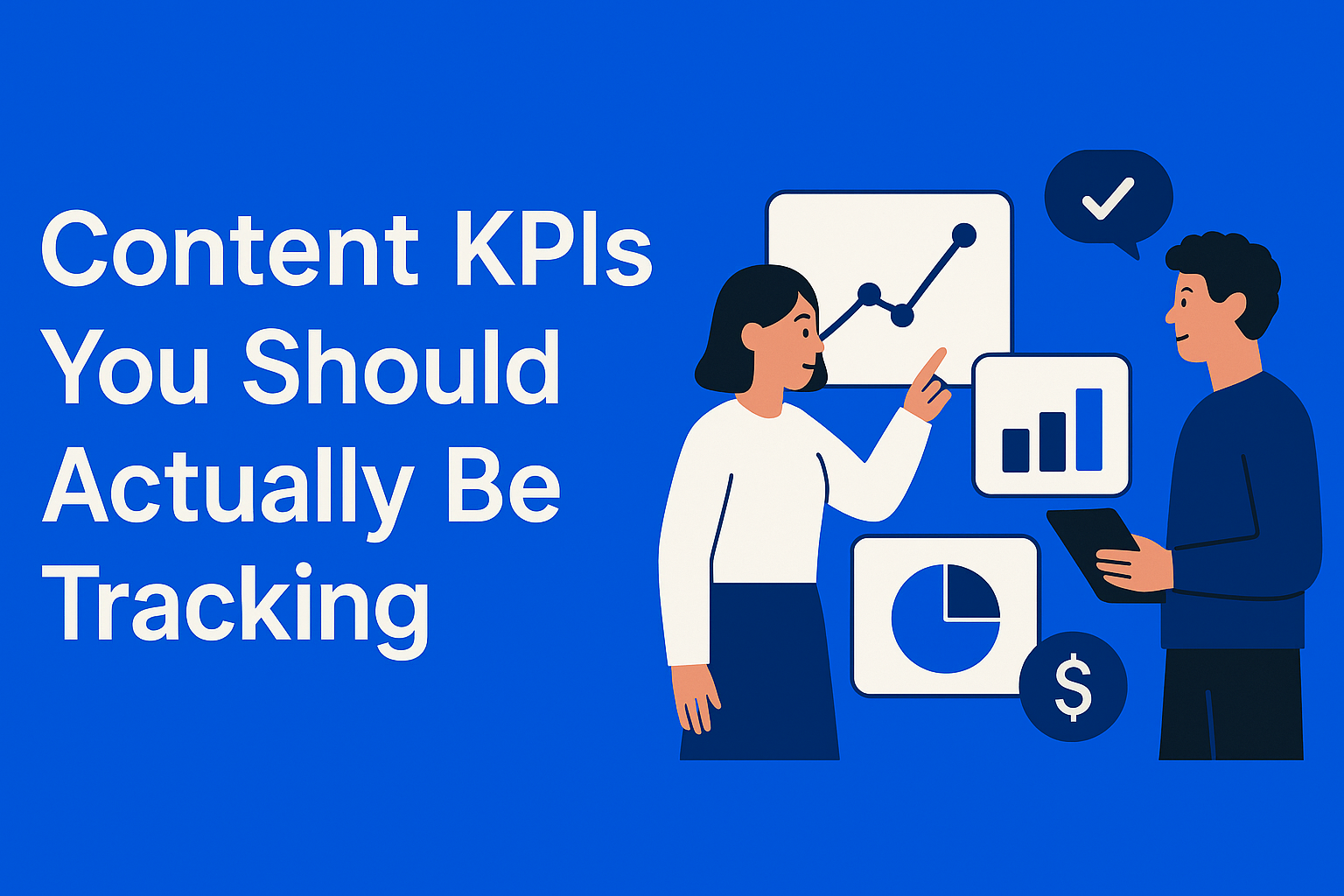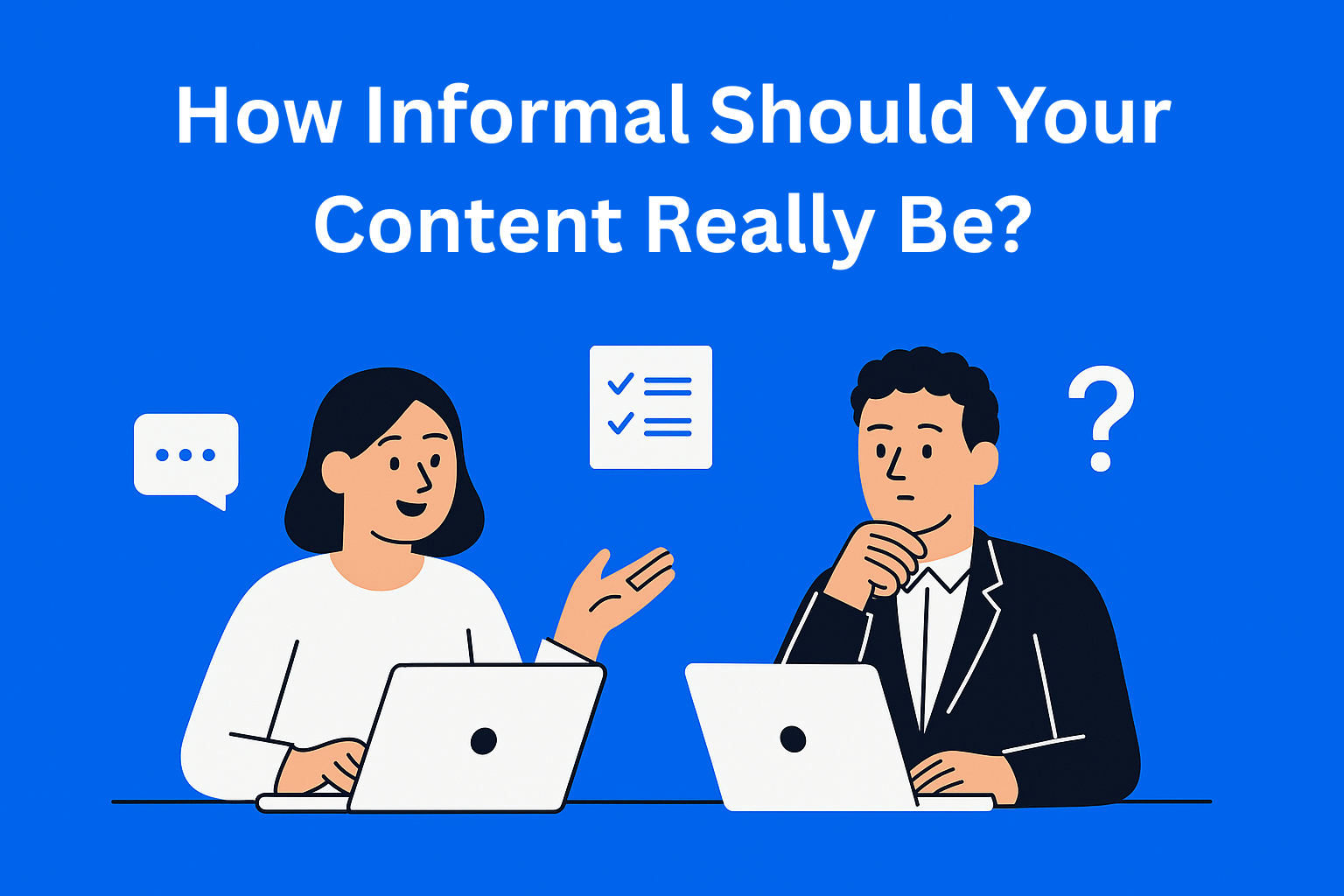Content KPIs You Should Actually Be Tracking (But Probably Aren’t)
Stop chasing vanity metrics. Learn which overlooked Content KPIs, like engagement depth, ROI, and audience loyalty, actually show the real impact of your content marketing.

Most teams working in content marketing focus on the wrong numbers. When people talk about content success, they usually think of pageviews, likes, or how many times something was shared on social media. While these numbers are interesting and give a picture of visibility, they don’t really say much about the true value of content. If we want content to truly contribute to business growth, we need to track different indicators - the ones that connect content to goals such as sales, loyalty, and long-term impact.
In this article, I’ll explain which Content KPIs you should track that are often overlooked.
Key Takeaways
- Vanity metrics aren’t enough - pageviews, likes, and shares look nice but rarely prove business impact.
- Engagement depth matters more - time on page, scroll depth, and in-text clicks show if readers truly consume content.
- Content-assisted conversions reveal value - even if not the last click, content often influences purchase decisions.
- Reader-to-lead ratio exposes weak spots - high traffic with low sign-ups signals copy or CTA issues.
- ROI, loyalty, and distribution efficiency are the real tests - measuring cost vs. return, audience retention, and channel performance connects content to growth.
What Content KPIs Are and Why They Matter
KPI means Key Performance Indicator. When it comes to content, these are the numbers and data that show how much content contributes to a company’s goals. The difference between what we call “vanity metrics” (numbers that look nice but don’t mean much) and real KPIs is huge.
For example, a large number of article views may look like success. But if none of those visitors sign up for a newsletter, download a resource, or become a customer, then the content hasn’t really achieved its goal. A true Content KPI should show that the content moves the user one step closer to the business objective.
The Most Common KPIs Everyone Tracks (But They’re Not Enough)
Before we get into the hidden and more important ones, it’s useful to understand what the most common indicators are that almost everyone looks at:
- Pageviews and impressions - show how many times a page was opened. The problem is that these numbers don’t reveal the quality of the visit.
- Bounce rate - shows the percentage of people who immediately leave the page. While it can be a signal that something is wrong, it’s often misleading because it doesn’t reveal why they left.
- Social shares and likes - help to see the popularity of content but rarely have a direct impact on sales or conversions.
These KPIs are not useless, but they don’t give a full picture. That’s why we need to track other indicators as well.
Content KPIs You’re Probably Not Tracking (But Should Be)
1. Engagement Depth
It’s not just important whether someone opened a page, but how long they stayed and how much of the content they actually consumed. Engagement depth measures how long people stay on the page, how far they scroll, and whether they click on links within the text. If readers spend more time and make it to the end, it means the content has value.
2. Content-Assisted Conversions
Content rarely sells a product on its own. But it often plays a key role in the decision-making process. For example, someone might first read a blog post, then check out a case study, and only then make a purchase. Content-assisted conversions show how often content was part of the path to purchase, even if it wasn’t the last step.
3. Reader-to-Lead Ratio
This KPI measures how many people from all visitors become leads - meaning they leave contact information, sign up for a newsletter, or download material. If the number of views is high but conversions are low, it means the content isn’t driving people to take action.
4. Content ROI
The real challenge in content marketing is measuring whether it pays off. Content ROI compares the cost of creating content with the benefits it brings - whether through sales, new clients, or retaining existing ones. It’s not always simple, but it helps us know if the effort is worth it.
5. Audience Retention & Loyalty
Real success isn’t when someone reads a text once, but when they come back again. Retention measures how many people return, while loyalty shows how often the same users follow the content. This is a sign that we are building trust and a long-term relationship.
6. Content Velocity & Shelf Life
Some articles quickly attract attention and then disappear, while others remain relevant for months or years. Content velocity measures how fast a piece of content delivers results, while shelf life shows how long it stays useful. These KPIs are especially important for planning future strategy.
7. Content Distribution Efficiency
It’s not just about creating content - it’s also about how we share it. Content distribution efficiency shows which channels (e.g. newsletter, LinkedIn, SEO) bring the most engaged users. If we spend time on networks that don’t deliver results, we’re missing opportunities.
How to Track These KPIs in Practice
All of this may sound complicated, but today there are many tools that make tracking easier.
- Google Analytics 4 - excellent for measuring engagement depth, time on page, and conversions.
- HubSpot - provides insight into how content contributes to sales and how many leads come from blogs or other materials.
- Mixpanel or Amplitude - track user behavior and journeys through content in detail.
- ContentSquare - measures scroll depth, clicks, and interactions within text.
The most important thing is to set goals and events you want to track. For example, if you want to know how many people scroll to the end of a post, you need to set up an event in your analytics. Once tools are connected with clear goals, tracking KPIs becomes routine.
Conclusion
Tracking pageviews and likes can be interesting, but that’s not the real picture of success. If we want content marketing to be more than decoration and to actually help the business, we need to track KPIs that connect content to goals.
The next time you look at a content report, ask yourself: do these numbers really show the value of my work, or do they just look nice? If the answer is the latter, it’s time to start tracking the right Content KPIs.






